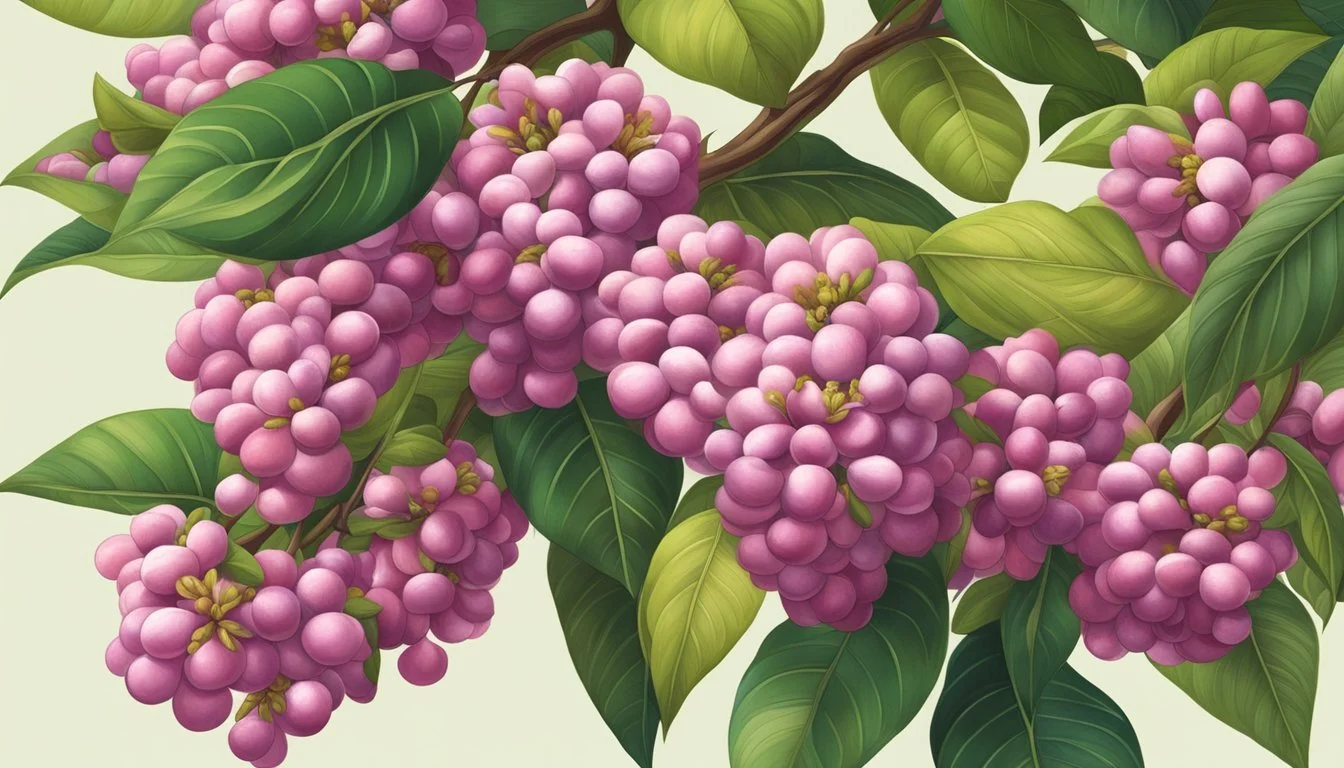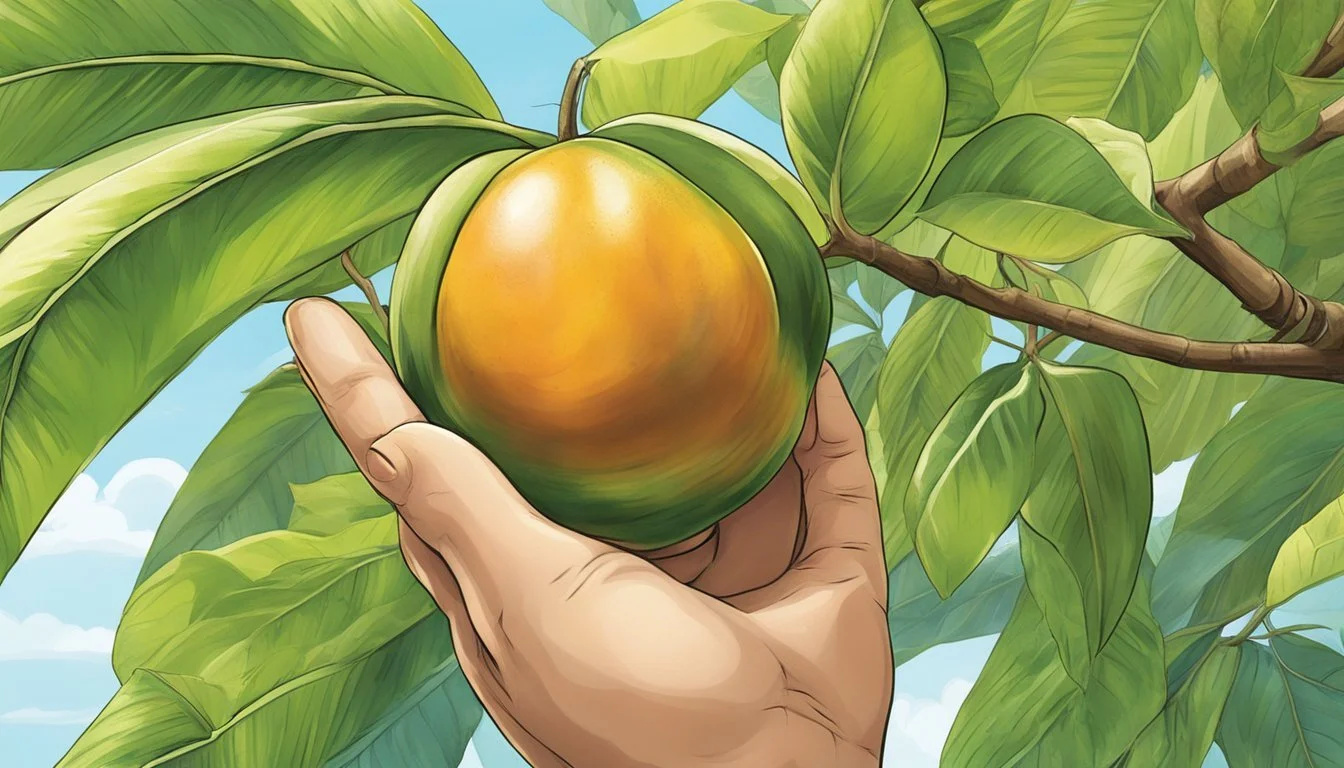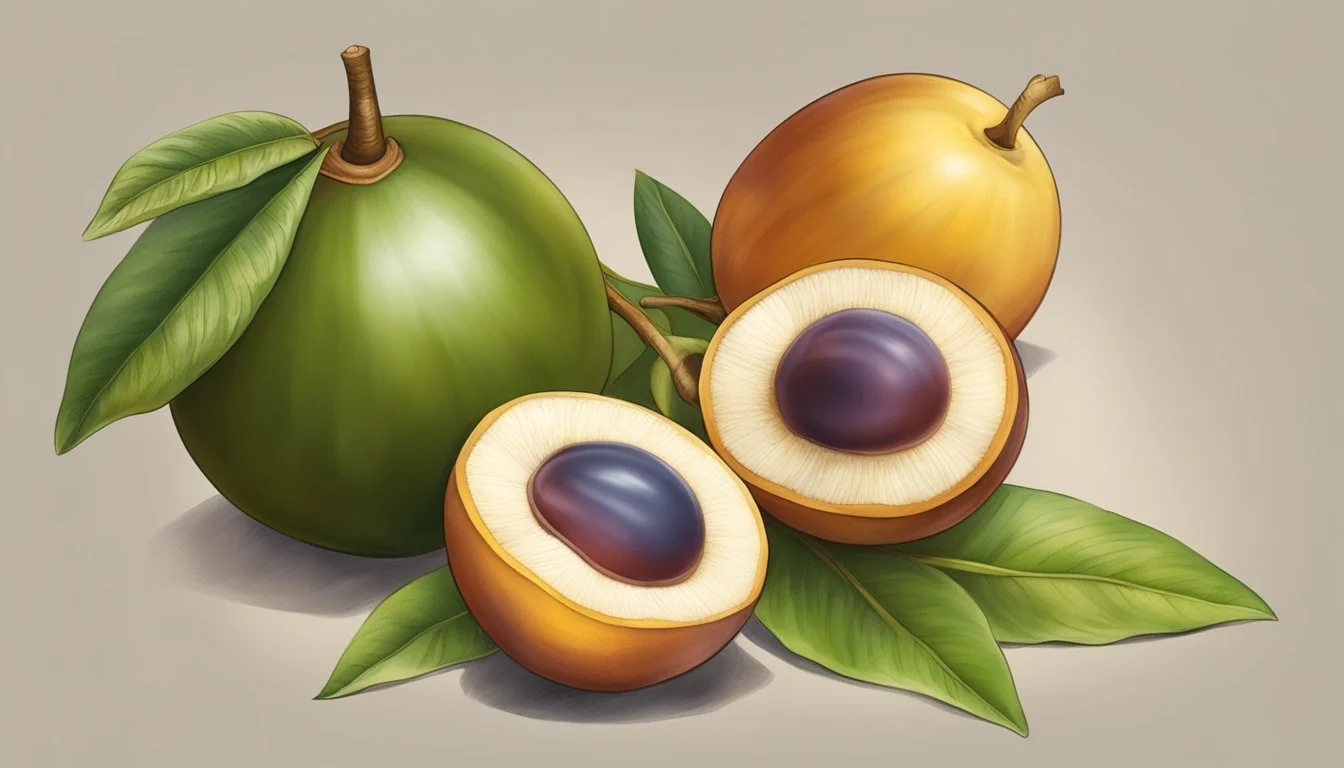How do You Eat an Icaco
The Simple Guide to Enjoying Cocoplums
Cocoplum, known scientifically as Chrysobalanus icaco, is a fruit-bearing shrub native to coastal areas of Florida and other tropical to subtropical regions. It is recognized by its rounded, shiny green leaves and the red-tipped new growth it produces. When ripe, the fruit of the cocoplum can be enjoyed by a variety of wildlife, as well as humans. This edible drupe typically has a white or purple-black skin when mature, and encloses a fibrous pit.
Eating an icaco, or cocoplum, begins with identifying the maturity of the fruit. A mature cocoplum is usually soft to the touch, indicating that its flesh is ripe and ready for consumption. One can consume the fruit fresh off the shrub or incorporate it into different culinary creations. This versatile fruit can be eaten raw, offering a mildly sweet and somewhat tart flavor, which some people enjoy while others can find less appealing.
Beyond raw consumption, the icaco can be used in a variety of recipes including jams, jellies, and sauces. Its integration into local cuisines underlines its importance and adaptability in food culture where it grows. The fruit is not only celebrated for its versatility but also for the various health benefits it provides, making it a valuable addition to the diets of those living within its growing regions.
Botanical Profile
The cocoplum, Chrysobalanus icaco, is a versatile plant with various identified ecotypes and cultivars, known for its resilience in coastal environments and significance as a native Florida species. This section explores its botanical characteristics and ecological importance.
Identification
Cocoplum is an evergreen shrub or small tree identifiable by its dense foliage and glossy round or elliptical leaves. It displays a panoply of colors—vivid green tips and potential pink to purple hues—sometimes accented by a distinctive red tip during new growth phases.
Habitat and Growth
Originally native to Florida and coastal regions, cocoplum thrives on sandy beach soils and withstands salt spray, making it salt tolerant. It favors full sun exposure but also adapts to dappled light conditions, showing considerable drought resistance once established.
Cocoplum Varieties
There are two primary ecotypes of cocoplums—coastal and inland. The coastal variant is more compact and salt-tolerant, while the inland type tends to be larger with broader leaves. Cultivated varieties like the 'Green Tip' or 'Red Tip' are popular for their ornamental foliage.
Environmental Benefits
The cocoplum is favorable for native plant landscaping, promoting local biodiversity. It provides habitat and food for wildlife, including gopher tortoises. The dense foliage offers shelter and the fruit, a source of sustenance for various bird species.
Pests and Diseases
Like all plants, cocoplum encounters some challenges. Common issues include pests such as the lobate lac scale and weevils, and diseases like algal leaf spots and botryosphaeria canker. However, with proper care and management, these can often be controlled or mitigated.
Culinary Uses
The cocoplum, or icaco, offers a variety of culinary uses ranging from simple, raw consumption to intricate recipes that lock in its unique flavor. Integral to regional cooking and offering a blend of taste and nutrition, the fruit can be transformed into a plethora of edible delights.
Traditional Cocoplum Recipes
Cocoplum fruit serves as a key ingredient in traditional jams and jellies. Standard preparations involve cooking the cocoplum with sugar, often with a hint of cinnamon, to enhance its natural sweetness and produce a spreadable delicacy. Jams and jellies made from icaco are not only favored for their taste but also for their extended shelf life compared to the fresh fruit.
Eating Raw Cocoplum
The edible drupes of cocoplum can be consumed raw and are appreciated for their subtle sweetness and pleasing texture. Ranging in size, these fruits are often eaten out of hand, and even the seeds, which contain edible oil, can be consumed raw or roasted.
Preparation Techniques
Beyond raw consumption, cocoplum can be used in cooking as part of savory dishes or transformed into syrup. The fruit's pulp exhibits versatility and pairs well with other ingredients, making it suitable for a variety of culinary applications. When cooked, cocoplum releases additional flavors that can range from tart to sweet depending on ripeness.
Health Benefits
Cocoplum is recognized for its nutritional value. While low in calories, it provides a worthwhile supply of vitamins and minerals. The presence of dietary fiber within the fruit's pulp also contributes to the overall health benefits of incorporating cocoplum into one's diet.
Harvesting and Storage
Cocoplums are typically harvested in clusters during spring when they reach peak ripeness. The fruit's shelf life is relatively short when fresh, but proper storage in cool, dry conditions can extend enjoyment. To preserve their taste and texture, cocoplum jams and jellies are a preferred method of maintaining the fruit's qualities year-round.
Landscaping with Cocoplum
Cocoplum is a versatile native Florida plant that offers both aesthetic appeal and functionality in landscaping. Its leathery leaves and ability to form a dense hedge make it ideal for gardeners seeking a medium-sized shrub or tree for their space.
Design Considerations
When integrating cocoplum into a landscape, consider its mature size and growth pattern. Cocoplum tends to spread, making it suitable as a focal point or as part of a hedge. Its new growth often shows a red tint, which can contribute to the aesthetic variety of a garden space. Given its native status, it contributes to local ecology and is well-adapted to Florida's climate.
Planting and Care
Cocoplums thrive in full sun to moderate shade. They adapt to a range of soil types and pH levels. Once established, cocoplums are salt-tolerant and can handle wet conditions, making them suitable for coastal areas. To establish a hedge, plant cocoplums 36 to 50 inches apart to allow room for growth. Regular irrigation will help new plants establish, but established shrubs are quite drought-tolerant, requiring minimal fertilization.
Propagation Methods
Propagation of cocoplum can occur via seed or stem cuttings. To propagate from cuttings, take a section of new growth, ensuring a clean cut that does not harm the parent plant. For seed propagation, it is essential to plant seeds from ripe fruit into a well-draining soil mix and maintain moderate moisture until germination.
Pruning and Maintenance
Regular pruning helps maintain the desired size and shape of cocoplum and encourage bushier growth. Pruning is best done after fruiting to shape the plant and achieve a more formal look, if desired. Remove dead or damaged wood as needed to maintain plant health.
Cocoplum as Groundcover
Cocoplum can also serve as an effective groundcover in larger areas. Its ability to spread and form dense clusters makes it suitable for controlling erosion and suppressing weeds. Choose a spreading variety like the Horizontal Cocoplum for low-lying areas where you want robust coverage and minimal maintenance.
By focusing on these specific aspects of cocoplum in a landscaping context, one can optimize its growth and take full advantage of its natural beauty and utility.
Cultural Significance
Cocoplum, a native plant to South Florida, holds a rich historical significance within various cultures, particularly due to its various uses ranging from food to craft materials.
Use in Native American Cultures
Native American cultures have historically valued the cocoplum for its nourishing fruit and other practical applications. In Florida native tribes like the Tequesta are acknowledged for having used cocoplum as a food source. The fruit itself has been consumed both fresh and preserved, either as jams or jellies. In addition to this, cocoplum wood and leaves may have been used in various tools or as part of traditional healing practices.
Incorporation into Local Cuisines
In South Florida, cocoplum is more than just a native shrub. It's an ingredient that has been incorporated into local cuisines over centuries. The fruit, suited to both sweet and savory dishes, is often turned into preserves. Cocoplum jam is a staple in some local communities, celebrating the native flora through the joys of food.
Cocoplum in Arts and Crafts
The influence of the cocoplum extends beyond edible uses into the realm of arts and crafts. Its fruit can be used to create natural dyes for textiles. Moreover, the cocoplum's presence has inspired the crafting of candles, which capture the essence of South Florida's landscape and impart a tropical ambiance. This multifaceted plant thus contributes to the cultural tapestry through both its material properties and as a muse for artistic endeavors.
Conservation and Sustainability
Cocoplum, a native Florida plant, plays an integral role in the ecology and conservation of regional habitats. Emphasizing sustainable practices ensures its preservation and supports local biodiversity.
Protecting Native Species
Cocoplum serves as an essential component in Florida's ecological framework. Conservation efforts must prioritize native species protection to maintain ecological balance. These efforts include controlling invasive species that may compete with cocoplum and working with local organizations, such as those in Pasco and Brevard counties, to monitor and support the health of native populations.
Cocoplum in Restoration Projects
Recognized for its resilience and adaptability, cocoplum is frequently incorporated in ecological rehabilitation projects. These initiatives often aim to restore disturbed areas, like those affected by construction or natural disasters. By planting cocoplum, project managers can bolster coastal and inland ecosystems, leveraging the plant’s capabilities to stabilize soil and provide habitat for wildlife.
Sustainable Harvesting Practices
When harvesting cocoplum, sustainable practices are critical to avoid overexploitation. Practices include:
Limiting the quantity of fruit taken from any single plant or area
Ensuring the continuous growth of the plant by not damaging it during harvest
Utilizing organic methods to maintain the health of both plant and soil
Maintaining these responsible methods supports the health of the species while allowing for the organic collection of fruit, a practice vital for the conservation of this valuable native Florida plant.
Additional Uses and Products
Beyond its culinary applications, the cocoplum is processed into a variety of products, owing to its unique properties. These products make use of different parts of the plant, developing from its fruit to the oil derived from the seeds.
Cocoplum Oil Extraction
The seeds of the cocoplum can be pressed to extract oil, which is then utilized in the cosmetic industry. Cocoplum oil is valued for its moisturizing properties and can be found in a host of skin care formulations. The process involves cleaning the seeds, drying them, and then mechanically pressing them to gather the oil.
Non-culinary Products
The versatility of the cocoplum extends into non-culinary products as well. Its oil is not only used in cosmetic items such as lotions and creams but also in manufacturing candles. The waxlike texture of the cocoplum oil provides a natural base for candle making. In addition, the fibers and foliage of the cocoplum have been identified for potential use in cotton products, though its application in textiles remains less common compared to its culinary and cosmetic uses.







